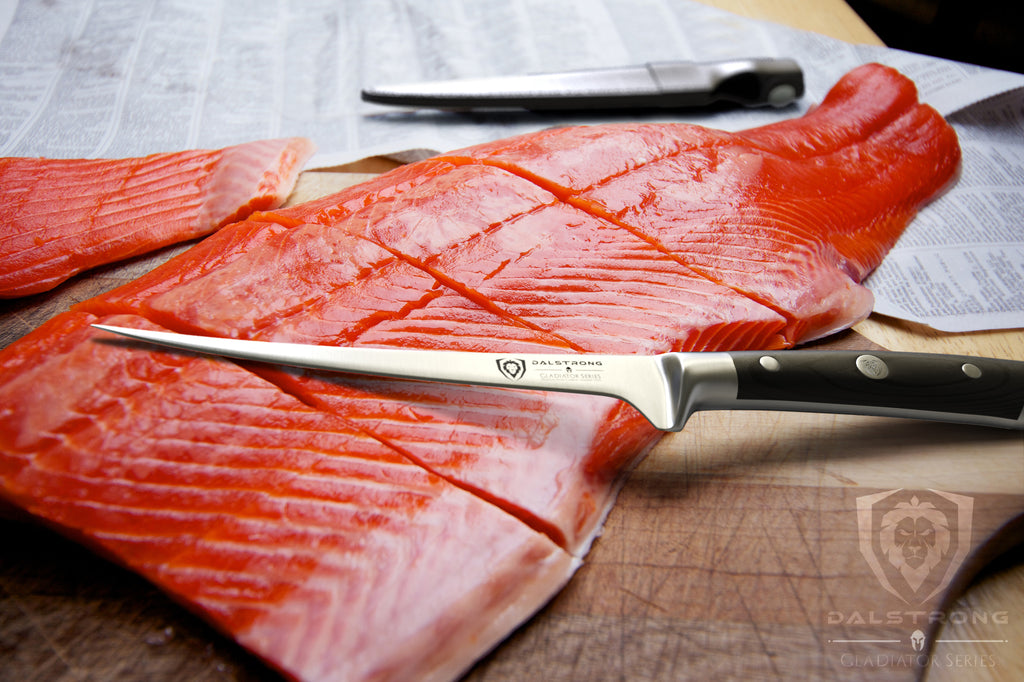Have you ever wondered what degree to sharpen a fillet knife? It is here, a significant topic to ensure optimal performance and longevity of your knife. Whether you are a professional chef or a kitchen hobbiyst, the correct sharpening angle can make a tremendous difference in your culinary experience.

Why Sharpening Angles Matter
Many may not realize the importance of sharpening angles, but they play a crucial role in the efficiency of a fillet knife. A well-sharpened knife offers precision, ensuring you can fillet fish with ease and accuracy, preventing unnecessary strain on your hands.
The Basic Science of Knife Sharpening
Understanding the science behind knife sharpening can give you an upper hand in mastering the technique. Essentially, sharpening involves grinding the knife’s edge to a fine point, usually between 15 and 30 degrees. This angle determines the sharpness and durability of the knife.

Common Sharpening Angles for Fillet Knives
For those who often ponder what degree to sharpen a fillet knife, it’s generally recommended to sharpen fillet knives at a 12 to 17-degree angle. This range provides the perfect balance for both sharpness and durability, crucial for filleting tasks.
15 Degrees – The Sweet Spot
Many experts suggest that sharpening your fillet knife to a 15-degree angle is approved and optimal. This angle is both sharp enough for precise cuts and robust enough to maintain its edge over time.

Tools Required for Sharpening a Fillet Knife
Having the right tools is paramount. Essential sharpening tools include a whetstone, honing rod, and knife sharpener. Each tool has unique advantages that contribute to the sharpening process.
Whetstone: A Sharpening Essential
The whetstone is a popular tool among culinary enthusiasts. Its ability to provide fine, controlled sharpening makes it a sought-after option. Learn more about how to sharpen a chef knife using a whetstone.
Honing Rod: Maintenance between Uses
A honing rod is often used for touch-ups between thorough sharpenings. It helps maintain the knife’s edge, ensuring optimal performance between uses.
Knife Sharpener: Quick and Efficient
For those short on time, a knife sharpener provides a quick and efficient method for sharpening your fillet knife. It’s a great tool for immediate results.

Steps to Sharpen a Fillet Knife
Sharpening a fillet knife can be easy with the correct steps. Let’s dive into the process!
Step 1: Safety First
Always prioritize safety. Make sure your workspace is well-lit and free from distractions. Use protective gloves to minimize the risk of accidents.
Step 2: Positioning the Knife
Position the knife at the correct angle, generally recommended between 12 to 17 degrees. Ensuring this angle is crucial for the sharpening process.
Step 3: Using the Whetstone
Moisten the whetstone before use. Position the knife against the stone, ensuring the correct angle, and draw it across the stone in a sweeping motion.
Step 4: Honing the Edge
After using the whetstone, use a honing rod to fine-tune the edge. This process polishes the blade, ensuring a clean, sharp edge.
How Often Should You Sharpen Your Fillet Knife?
The frequency of sharpening depends on your usage. For regular users, sharpening every few weeks is advisable. Occasional users might need to sharpen only a few times a year.
Signs Your Knife Needs Sharpening
Difficulty cutting, visible nicks, and reduced precision are signs that your fillet knife needs sharpening.
Maintaining Your Sharpened Knife
Proper maintenance is vital for a sharpened knife. Clean it with care, store it securely, and avoid using it on hard surfaces.
Common Mistakes to Avoid
Avoiding common sharpening mistakes can help maintain your knifes performance.
Incorrect Angles
Sharpening at an incorrect angle, either too steep or too shallow, can damage your knife.
Inconsistent Pressure
Applying inconsistent pressure can result in an uneven edge, reducing the knife’s efficiency.
Neglecting Maintenance
Regular maintenance is crucial. Neglecting it can lead to dullness and inefficiency over time.
Conclusion: Sharpening for a Superior Fillet Knife
In summary, understanding what degree to sharpen a fillet knife is key to ensuring its efficiency and longevity. By maintaining the correct angle and utilizing appropriate tools, you can achieve a superior cutting edge. To explore more on this topic, you can learn about Serbian chef knives or find the best professional sets.
FAQ
What is the best angle to sharpen a fillet knife?
The best angle is generally between 12 to 17 degrees. This range provides a good balance of sharpness and durability.
Can I use a regular knife sharpener for my fillet knife?
Yes, a regular knife sharpener can be used. Ensure it can accommodate the required angle.
How often should I sharpen my fillet knife?
The frequency of sharpening depends on usage. Regular users should sharpen their knives every few weeks, while occasional users might sharpen a few times a year.
Final Thoughts
Sharpening your fillet knife at the right angle is critical for achieving precise cuts and maintaining the knife’s edge over time. With the right tools and techniques, you can ensure your fillet knife remains a valuable asset in your kitchen. For more information on knife care, you can visit this external guide on knife cleaning.
As an Amazon Associate, I earn from qualifying purchases.


